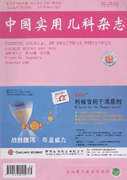Abstract:Objective To investigate the genetic structure of Streptococcus pneumoniae serotype 19F isolates from children in Beijing. Methods A total of 130 isolates were identified as serotype 19F among 1033 S. pneumoniae strains collected from 1997 to 2006 and 2010. There were 120 isolates characterized by antibiotic susceptibility, macrolide resistance gene and multilocus sequence typing(MLST). Results Among the 120 strains, only five strains were nonsusceptible to penicilln and the nonsusceptibility rate to cephalosporins increased from 1997 to 2010. There were 119(99.2%) strains resistant to erythromycin; 115(96.6%) carried the ermB gene and 64(53.8%) carried mefA gene, 60(50.4%) carried both genes. All isolates belonged to 31 sequence types, ST983 was the most prevalent ST, followed by ST271. From 1997 to 2010, the percentage of CC271 increased from 14.3% in 1997-1998 to 92% in 2010, whereas CC983 decreased from 64.3% to 0%. CC271 showed higher nonsuscetibility rate to β-lactam antibiotics than CC983. Conclusion The prevalence of serotype 19F of S.pneumoniae increases from 1997 to 2010 in Beijing. The increase of nonsusceptibility rate to β-lactam antibiotics is associated with the spread of international resistance clone CC271 due to the
selection of antibiotics overuse.

